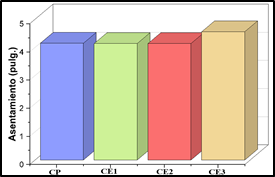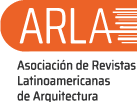Evaluación de las propiedades mecánicas del concreto al incorporar extracto de aloe-vera como inhibidor de óxido por carbonatación
DOI:
https://doi.org/10.51372/gacetatecnica262.7Resumen
El objetivo del estudio fue evaluar la incidencia del extracto de aloe-vera como inhibidor de óxido inducido por carbonatación en el concreto; así mismo, el estudio adoptó una metodología aplicada y un diseño experimental, en el que se evaluó el concreto con diferentes dosificaciones de extracto de aloe vera en el cual las concentraciones utilizadas para la incorporación del aloe vera en el concreto fueron 0,75%, 1,30% y 1,7%. Además, los resultados indican que la incorporación de aloe vera en el concreto afecta de manera diversa sus propiedades, dependiendo de la concentración, donde se destacó que con concentraciones bajas de 0,75% se observó un leve aumento en la zona carbonatada y una ligera mejora en la resistencia a la compresión (5%), sin alterar significativamente la consistencia ni la resistencia a flexión. Sin embargo, a concentraciones más altas como 1,30% y 1,70%, los efectos fueron menores o incluso negativos, sugiriendo que un exceso de aloe vera podría afectar negativamente la estructura del concreto
Descargas
Citas
J. R. D., Santos, C., Effting, M. P., Serbent, y J. B. Matsuda, «Biomineralization of calcium carbonate in concrete by the action of Bacillus pumilus””, Engenharia Sanitaria e Ambiental, 28. https://doi.org/10.1590/s1413-415220220277, 2023
A. F., Restrepo-Ramirez, C. A., Rúa-Machado, y Y. P. Arias-Jaramillo, “Optimizaciones en el diseño de mezclas de concreto para la sostenibilidad de un Área Metropolitana de Sudamérica implementando análisis de ciclo de vida de materiales”, Revista Hábitat Sustentable, 14 (1), 44–65. https://doi.org/10.22320/07190700.2024.14.01.04, 2014
D., Fan, J.-X., Lu, X.-S., Lv, T., Noguchi, R., Yu, y C. S. Poon, “Carbon capture and storage CO2 foam concrete towards higher performance: Design, preparation and characteristics”, Cement and Concrete Composites, 105925. https://doi.org/10.1016/j.cemconcomp.2025.105925, 2025
Q., Liu, Y., Yan, Y., Hu, Q., You, y G. Geng, “Carbonated waste paste calcined clay cement with enhanced CO2 mineralization and early strength”, Carbon Capture Science & Technology, 100343. https://doi.org/10.1016/j.ccst.2024.100343, 2024
R., Mi, G., Pan, y F. Zhou, “Does carbonation affect the microstructural inhomogeneity of recycled aggregate concrete?”, Journal of Building Engineering, 99, 111650. https://doi.org/10.1016/j.jobe.2024.111650, 2025
P. A., Aranda Villanueva, y K. N. Carrion Rabanal, “Compressive Strength of Concrete with Additions of Barley Bran Ash and Sugarcane Bagasse”, 22nd LACCEI International Multi-Conference for Engineering, Education and Technology LACCEI 2024. https://doi.org/10.18687/laccei2024.1.1.769, 2024
M., Carranza, S., Goicochea, y H.Infante, “Axial compressive strength of concrete f'c=210 and 280 kg/cm², when replacing aggregate with volcanic rock origin”, 22nd LACCEI International Multi-Conference for Engineering, Education and Technology LACCEI 2024. https://doi.org/10.18687/laccei2024.1.1.731, 2024
A. N., Colunche Idrogo, L. M., Mayta Tanta, A. C., Flores Quispe, y F. Del Carpio Delgado, “Comportamiento de concreto autocompactante de 28 mega pascales aplicando materias primas sostenibles y su influencia en el comportamiento mecánico”, Salud, Ciencia y Tecnología - Serie de Conferencias, 2, 395, https://doi.org/10.56294/sctconf2023395, 2023
A., Oblitas-Torres, W. Y., Torres-Muñoz, B. E., Oblitas-Gastelo, y F. A. Fernández-Otoya, “Análisis del bloque de concreto reforzado con EPS y PVC-U para estructuras”, DYNA, 91(234), 163–171, https://doi.org/10.15446/dyna.v91n234.116087, 2024
G. S., Martinez Ocharan, L. M., Merma Gallardo, y S. A. Taico Lezama, “Construction of granular bases in the pavement structure with the use of recycled concrete aggregate”, 22nd LACCEI International Multi-Conference for Engineering, Education and Technology LACCEI, https://doi.org/10.18687/laccei2024.1.1.1145, 2024
J. C. Z., Barbieri, M. T., Veit, C. E. T., Balestra, R., Schneider, T. P. d., Araújo, P. R. S., Bittencourt, G. d. C., Gonçalves, y A.Sandmann, “The Influence of Chitosan Addition on Sulfuric Acid-Attack and Carbonation of Concrete”, Revista de Gestão Social e Ambiental, 18(7), Artículo e06097. https://doi.org/10.24857/rgsa.v18n7-065, 2024
X., Chen, X., Liu, S., Cheng, X., Bian, X., Bai, X., Zheng, X., Xu, y Z.Xu, “Machine learning-based modelling and analysis of carbonation depth of recycled aggregate concrete”, Case Studies in Construction Materials, Artículo e04162. https://doi.org/10.1016/j.cscm.2024.e04162, 2024
A., Guzmán, S., Acosta, C.Dagne, “Evaluation of the carbonated front in concrete samples subjected to non - regular wetting-air drying cycles”, Revista ALCONPAT, 15 (1), pp. 35–49, https://doi.org/10.21041/ra.v15i1.732, 2025
P., Hajibabaee, A., Behnood, Ngo, T., y E. M. Golafshani, “Carbonation depth assessment of recycled aggregate concrete: An application of conformal prediction intervals”, Expert Systems with Applications, 126231. https://doi.org/10.1016/j.eswa.2024.126231, 2024b
L. C., Chiaradia, F. C. R., Almeida, M. T. P., Aguilar, E. J. P. Figueiredo, “Influence of temperature on the electrical resistivity of concrete and kinect corrosion of reinforcement”, Revista ALCONPAT, 14 (1), pp. 1 –12, DOI: https://doi.org/10.21041/ra.v14i1.709, 2024
E., Rucana Guadalupe, G. F., Delgado Calderón, N., Campos Vasquez, y J. L. Neyra Torres, “Influence of nanomaterial (Zinc Oxide) on the durability of conventional concrete’, 21st LACCEI International Multi-Conference for Engineering, Education and Technology LACCEI 2023, https://doi.org/10.18687/laccei2023.1.1.782, 2023
M. A., Burga Chávez, K. N., Carrion Rabanal, E. A., Castrejón Calderón, Chuquiruna L. V., Miranda, J., Taica Guevara, y J. S. Vásquez Peña, “Analysis of the Effects of the Addition of Sodium Bicarbonate in the Concrete”, 22nd LACCEI International Multi-Conference for Engineering, Education and Technology. Latin American and Caribbean Consortium of Engineering Institutions. https://doi.org/10.18687/laccei2024.1.1.75, 2024
N., Cortez, Y., Herrera Saenz, S., Ramirez Curi, L., Shuan Lucas, y A. V. Torre Carrillo, “Evaluation of Accelerated Carbonation of High Strength Concrete with Anodic Manganese Dioxide Nanoparticles”, 22nd LACCEI International Multi-Conference for Engineering, Education and Technology (LACCEI 2024), https://doi.org/10.18687/laccei2024.1.1.1221, 2024b
M., Sánchez, A., Hinostroza, K., Olarte, y J. Rodriguez, “Bloques de concreto para viviendas de albañilería estructural construidas en zona de atmósfera marina utilizando residuos de tubérculos de la industria alimentaria”, The 18th LACCEI International Multi-Conference for Engineering, Education, and Technology. Institutions, https://doi.org/10.18687/laccei2020.1.1.173, 2020
C., Quispe, D., Lino, J., Rodríguez, y A. Hinostroza, “Concrete cracking control in underwater marine structures using basalt fiber”, [IOP Publishing Ltd], http://hdl.handle.net/10757/655950, 2021
NACIONES UNIDAS, “Objetivo de Desarrollo Sostenible”, Disponible: https://www.un.org/sustainabledevelopment/es/objetivos-de-desarrollo-sostenible/, 2024
J. R. P. d., Silva, R. O. H. d., Silva, A. d. F., Silva, E. L. T., França, E. P., Hernández, y P. M. A. d. Farias, “Concreto de cimento Portland dopado com quitosana: propriedades mecânicas e microestrutural”, Matéria (Rio de Janeiro), 28(2). https://doi.org/10.1590/1517-7076-rmat-2023-0037, 2023
G., De Andrade Coni, Tafuri A., Costa, A., Gonçalves Costa, y G. Sakuma, (). “Degradação do concreto através da formação de ácido sulfúrico biogênico em uma Estação Elevatória de Esgoto (EEE)”, Revista ALCONPAT, 12(2), 279–295. https://doi.org/10.21041/ra.v12i2.571, 2022
R. A., García-León, A., Sanchez-Torrez, W., Rincon-Cardenas, N., Afanador-Garcia, L., Moreno-Pacheco, y M. Lanziano-Barrera, “Experimental study about the improvement of the mechanical properties of a concrete cobble using recyclable additives”, DYNA, 90(227), 45–55. https://doi.org/10.15446/dyna.v90n227.107046, 2023
Asociación Española de Normalización (AENOR), UNE-EN 13295:2005 – “Productos y sistemas para la protección y reparación de estructuras de hormigón. Métodos de ensayo. Determinación de la resistencia a la carbonatación”, Madrid, España: AENOR, 2005
ASTM International, “ASTM C143/C143M-20: Standard Test Method for Slump of Hydraulic-Cement Concrete”, West Conshohocken, PA, USA: ASTM International, 2020
ASTM International, “ASTM C39/C39M-21: Standard Test Method for Compressive Strength of Cylindrical Concrete Specimens”, West Conshohocken, PA, USA: ASTM International, 2021
ASTM International, “ASTM C78/C78M-22: Standard Test Method for Flexural Strength of Concrete (Using Simple Beam with Third-Point Loading)”, West Conshohocken, PA, USA: ASTM International, 2022
AOAC International, “Official Method 981.12 — pH of Acidified Foods, in Official Methods of Analysis of AOAC International”, 18th ed., Gaithersburg, MD: AOAC International, 2005

Publicado
Cómo citar
Número
Sección
Derechos de autor 2025 Junior Arturo Gavilan Lizana, Jorge Luis Soto Chicchon, Javier Reynoso Oscanoa, Aldair Enrique Sandoval Tamariz, Fiorela Yselina Perez Pereda

Está obra está bajo licencia Creative Commons Attribution-NonCommercial-ShareAlike 4.0 International License.
Las opiniones expresadas por los autores no necesariamente reflejan la postura del editor de la publicación ni de la UCLA. Se autoriza la reproducción total o parcial de los textos aquí publicados, siempre y cuando se cite la fuente completa y la dirección electrónica de esta revista. Los autores(as) tienen el derecho de utilizar sus artículos para cualquier propósito siempre y cuando se realice sin fines de lucro. Los autores(as) pueden publicar en internet o cualquier otro medio la versión final aprobada de su trabajo.






.png)




